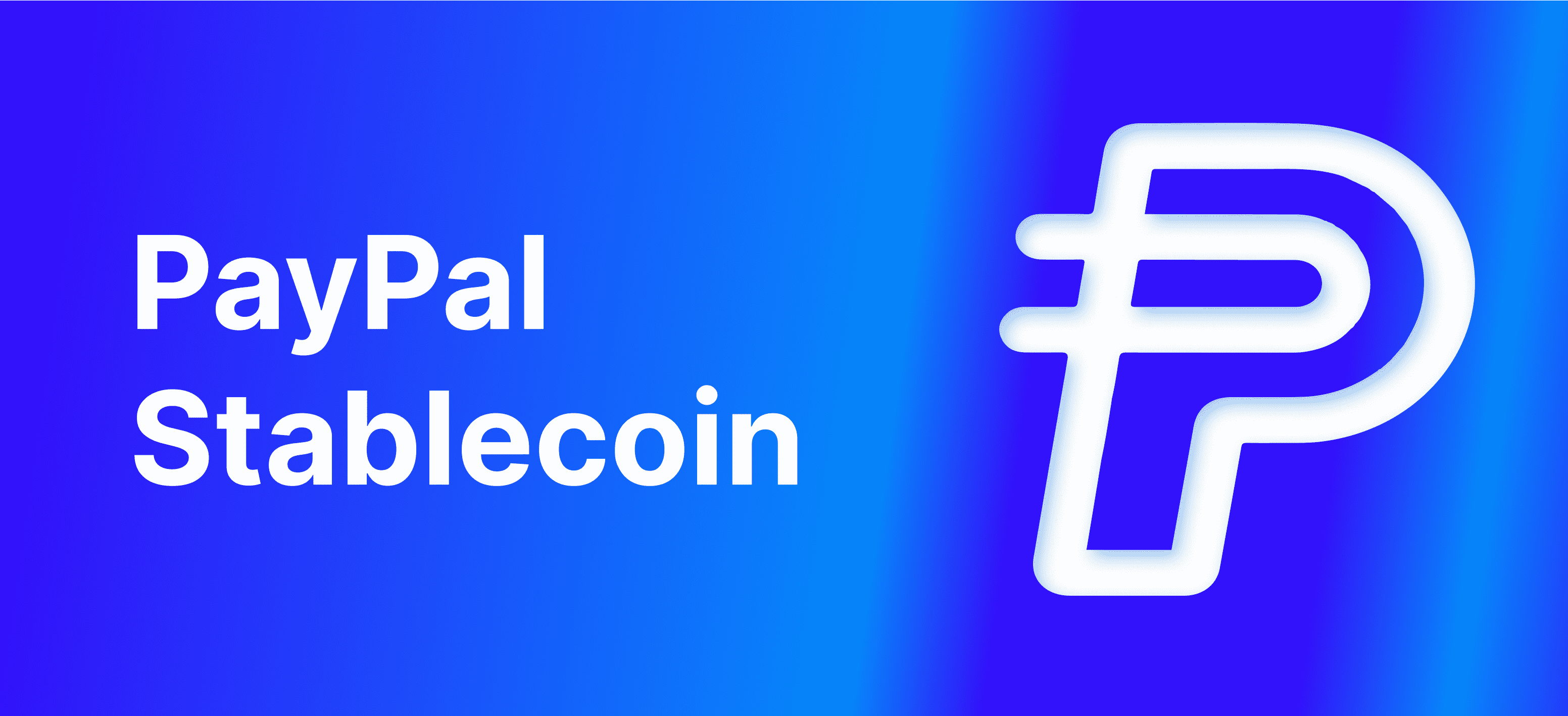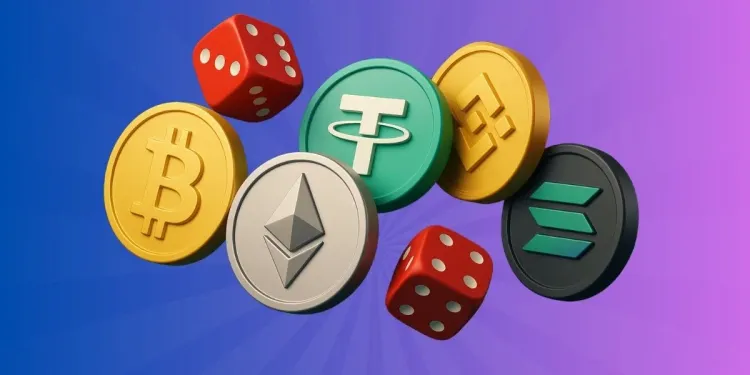Stablecoins: A Look at What's Driving the Innovation

Bernstein expects the stablecoin market to hit $3 trillion in 2028. For context, the value of the stablecoin market at the end of December 2023 is $130 billion. So, what's behind this bullish sentiment from one of the world's top brokerage firms? To what and where can we attribute the fast growth of stablecoins? And are stablecoins on track to disrupt the online payments industry in the next few years?
In recent months, many in the industry have a bullish sentiment on stablecoins. There's rising support for these types of cryptocurrencies, and they're coming from inside and outside the crypto industry. Bernstein, a leading brokerage and wealth management company, sees the stablecoins market hit $3 trillion in 2028, and financial companies like Visa are interested in knowing whether consumers will use stablecoins to make purchases.
But it wasn't all good for stablecoins, and in the past, it's also the subject of bad headlines and speculations. Many still question the promise of stability offered by stablecoins. For example, a BIS study explores the disparity between different types of stablecoins in terms of the promised disparity. The study found that fiat-backed stablecoins pegged to traditional fiat currencies boast a better track record of maintaining their parity than crypto or commodity-backed counterparts. The common link for all stablecoins is that they exhibit lower volatility than Bitcoin and other altcoins.
Although there have been concerns about stablecoins' promise of parity and price stability, stablecoins remain popular and are fast-changing the online payments landscape. Let's examine the different trends and innovations driving the popularity and increasing adoption of stablecoins.
Industry continues to welcome new stablecoins
Although there are concerns about their stability and parity, stablecoins remain popular, and new ones have been introduced to the public. In August 2023, PayPal announced the launch of its USD-denominated stablecoin, PayPal USD (PYUSD).
One month after its release, PayPal's stablecoin accounts for just less than 0.1% of the market. But as of May 2024, PYUSD is now the ninth largest stablecoin with a market cap of approximately $377 million. Given PayPal's brand recognition and experience in complying with regulatory requirements, many expect that PayPal's share in the growing stablecoins market will still increase.
If this happens, it can trigger a surge in demand for its use within and outside the cryptocurrency industry. As such, experts recommend that this coin be continued monitored and that future-proofing policies be part of the agenda.
In Asia, the Philippines' Coins.ph has earned the nod of the Bangko Sentral ng Pilipinas to pilot a Philippine Peso-backed stablecoin, PHPC. Coins.ph's proposal will fall under the Bangko Sentral's Regulatory Sandbox Framework and will be backed by the company's cash and cash equivalents in Philippine banks. The pilot implementation will assess stablecoins 'real-world applications while monitoring their impact on the financial landscape. Coins.ph aims to test and launch the stablecoin this year.
Mainstream payment companies are increasing their exposure to stablecoins
Traditional financial companies and institutions are slowly increasing their exposure to stablecoins, suggesting confidence in the technology. Here's a look at the top companies and how they slowly integrate stablecoins into their operations.

PayPal
PayPal's foray into stablecoins can help crypto and the traditional financial ecosystem. While other financial companies also toyed with the idea of stablecoins, PayPal offers the most promising project. PayPal can potentially differentiate its stablecoins project thanks to its large user base, experience as a payment company, and familiarity with global financial regulations. The problem with some companies developing their stablecoins is that they don't have a 'captive audience' to which they can cross-sell their financial products.
Visa and Circle
Visa has announced that it is expanding its stablecoin settlement capabilities to the Solana blockchain and working with merchant acquires Nuvei and Worldpay. The company's exploration of potential stablecoin uses began in 2021 when it tried to test USDC for settlement on the issuance side. The project was successful, and later, USDC and the Ethereum blockchain were leveraged to receive payments from Crypto.com for cross-border volume for Australia's live card program.
Crypto.com now relies on USDC to complete the settlement obligations on Visa cards in Australia, with plans to expand this service in other regions. Before this project, the settlement for cross-border payments on Crypto.com Visa cards takes days to process, with costly intentional wire transfers. Thanks to this Visa and Crypto.com project, it can send USDC cross-border over the Ethereum blockchain directly to the Visa treasury-managed Circle account, cutting the time and complexity of international wire transfers.
Deutsche Bank
Deutsche Bank AG, or simply Deutsche, is a German multinational investment bank and financial services company that also explored the possible use cases of stablecoins. The bank has announced it's developing a Euro-backed stablecoin in collaboration with the crypto investment firm Galaxy Digital and liquidity firm Flow Traders.
This new project is called AllUnity and will be regulated by BaFin. DB and the rest of the team aim to bridge the gap between traditional and digital finance by building a platform that facilitates on-chain settlement for private, corporate, and institutional use.
Ripple
Ripple is working with central banks of different countries to develop stablecoins, including a project with the Pacific island nation of Palau to issue a government-backed stablecoin. This stablecoin is called PSC, backed by the US dollar, and issued by the XRP Ledger.
The Republic of Palau has announced the success of its three-month pilot and looks forward to mass adoption. According to Palau's Ministry of According to Palau's Ministry of Finance, the project aims to promote the use of the stablecoin at the national level and make it a convenient and cost-effective way of payment option; the project aims to promote the use of the stablecoin at the national level, and make it a convenient and cost-effective way of payment option. The government believes that the PSC can give its people a secure, innovative, and cost-effective way to access their money digitally.
Ripple hopes that this project can be replicated in other regions. The company adds that stablecoins can benefit emerging economies, particularly by increasing the adoption rate of cryptocurrencies. They say stablecoins have a unique opportunity for growth since they have an underlying utility free from high volatility.
MoneyGram
MoneyGram is a US-based money transfer company with over 150 million customers worldwide. With MoneyGram, you can send money in person, online, or even using your mobile app. Payments can be sent to a bank account, or you can collect them in cash, depending on the region you're sending to.
Today, MoneyGram has added another product to its platform, the MoneyGram Access. This new product allows users to convert their fiat currency into digital cash and back conveniently. MoneyGram's crypto wallet works on the Stellar blockchain and supports instant payments and transfers between digital currencies and traditional money. According to MoneyGram CEO Alex Holmes, using a stablecoin wallet offers more flexibility for consumers to manage currency fluctuations.
JP Morgan Chase
JPMorgan Chase is another established financial institution that has tapped the potential of stablecoins through its JPM Coin digital currency. The company has introduced programmable payments for its clients that rely on smart contracts that automatically execute payments according to the "if-this-then-that" interface. It boasts a business-to-business use case, with JP Morgan identifying supply-chain payments as its most likely application.
The increasing role of regulation on stablecoins' growth
Of course, the biggest influence on the growth of stablecoins will likely come from policymakers and regulators, not companies. Regulations are worth both ways for the crypto and the stablecoins industry. In theory, The lack of regulation can slow the adoption of stablecoins in most regions since the rules and framework are now clear and differ from country to country.
Currently, policymakers worldwide are looking to regulate stablecoins. There is also a push in the United States to stablecoins, with Federal Reserve Vice Chair for Supervision Michael Barr saying that he's 'deeply concerned' about the unregulated stablecoins. He added that the proliferation of unregulated stablecoins poses a risk to the US payment systems and the financial landscape. Fed Chair Jerome Powell also indicates his support for stablecoin legislation and regulation. Over the European Union, stablecoin issuers must be licensed in at least one EU country, and they should be able to demonstrate an ability to manage redemptions and boast good governance. European Union's approach aims to address some issues surrounding stablecoin's 1:1 backing which have gone under many questions lately.
Final thoughts
Stablecoins have established their practical use cases for online payments and other transactions. Also, they have emerged as a hedge against the volatility of other cryptocurrencies like Bitcoin. Some issuers see stablecoins as an exciting alternative to traditional money when executing payments.
However, experts say that the market for direct retail payments will take time to develop. For everyday transactions, people still rely on traditional money and cards. But as more established companies recognize and integrate the use of stablecoins, it's only a matter of time before their use becomes mainstream.
With the trends we're seeing today and the increasing attention of regulators, stablecoins are not just a fad but an important tool for the financial landscape.




